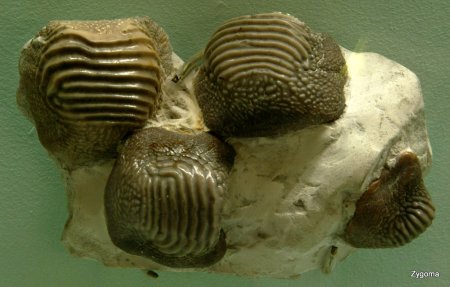On Friday I gave you these objects to identify:
Apart from their superficial similarity to chocolate pralines or denuded molluscs several of you managed to identify that these are in fact teeth.
In particular Dave Godfrey, David and Styracosaurus Rider pwned this object with a definitive genus identification of Ptychodus and a more tentative species identification of mammilaris. The identification I have for these specimens is Ptychodus polygyrus Agassiz, 1835 from the South East Coast of England.
These Cretaceous hybodontid sharks were adapted for feeding on molluscs and other hard-shelled marine invertebrates. Their robust teeth are ideal for cracking and crushing shell, much like many modern rays.
The ridges on their teeth can be used to identify species and the curved margins of some of the ridges on these teeth suggest that they aren’t from P. mammiliaris, since they have predominantly straight ridges across the tooth. That said, I’m not 100% sure that they are P. polygyrus either, since they don’t seem to have quite as much of the concentric pattern of ridges expected for that species – although that may well vary across the tooth plate. Still, I have a suspicion that these may be P. decurrens.
For more geekery – I mean information – about these weird sharks I recommend taking a look at The Oceans of Kansas and Robert Randell’s British Chalk Fossils sites.


people who don’t read The Oceans of Kansas and British Chalk Fossils are the geeks. people like us love life the way it deserves to be loved. even fossil sharks deserve our love. I love those teeth and you shared them with us. which was mighty generous of you. keep up the good work.
Never in 947 million years would I suspect the word “pwned” being uttered on a blog like this. But there you are 😛
I guess the south of England isn’t really surprising as a locality, given that abundance of chalk.